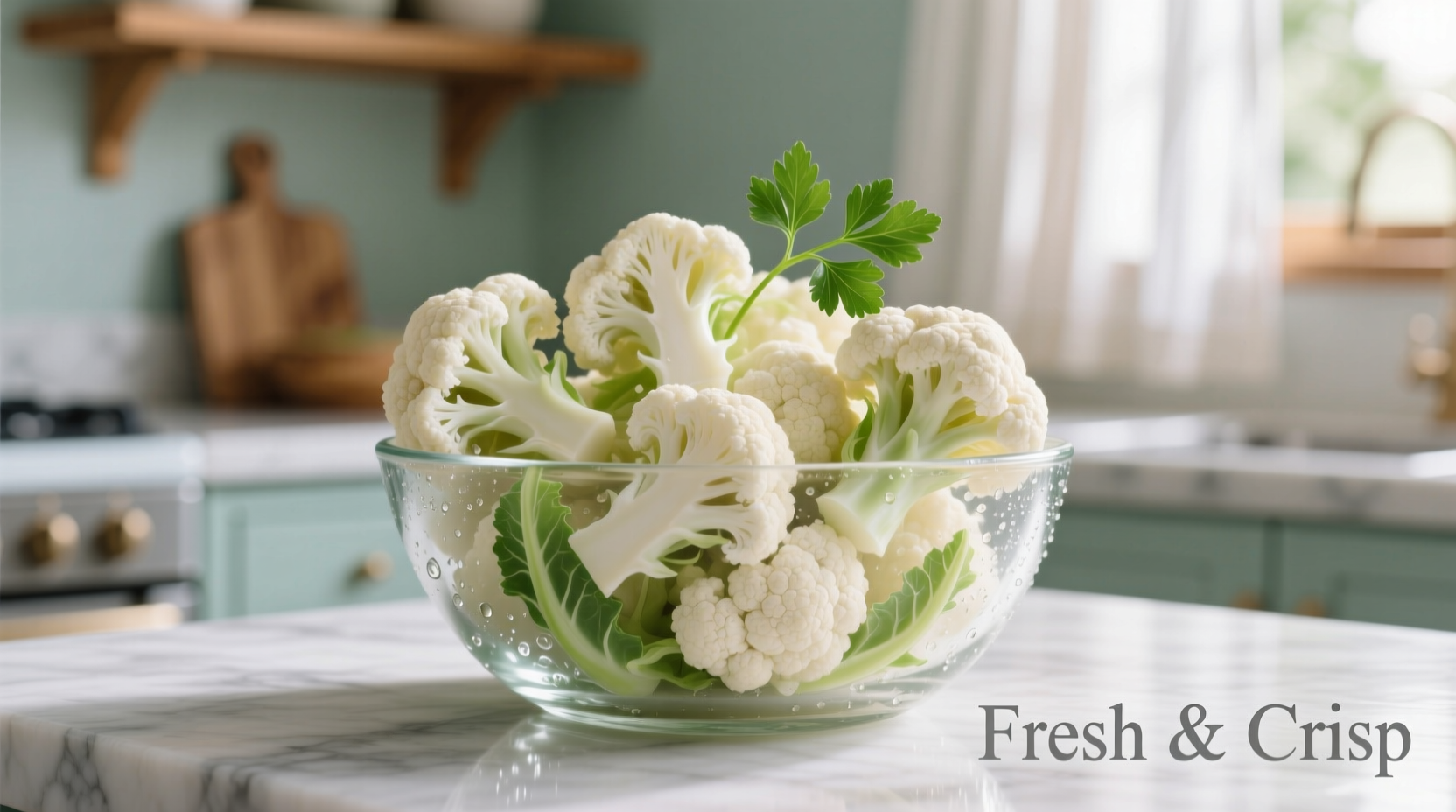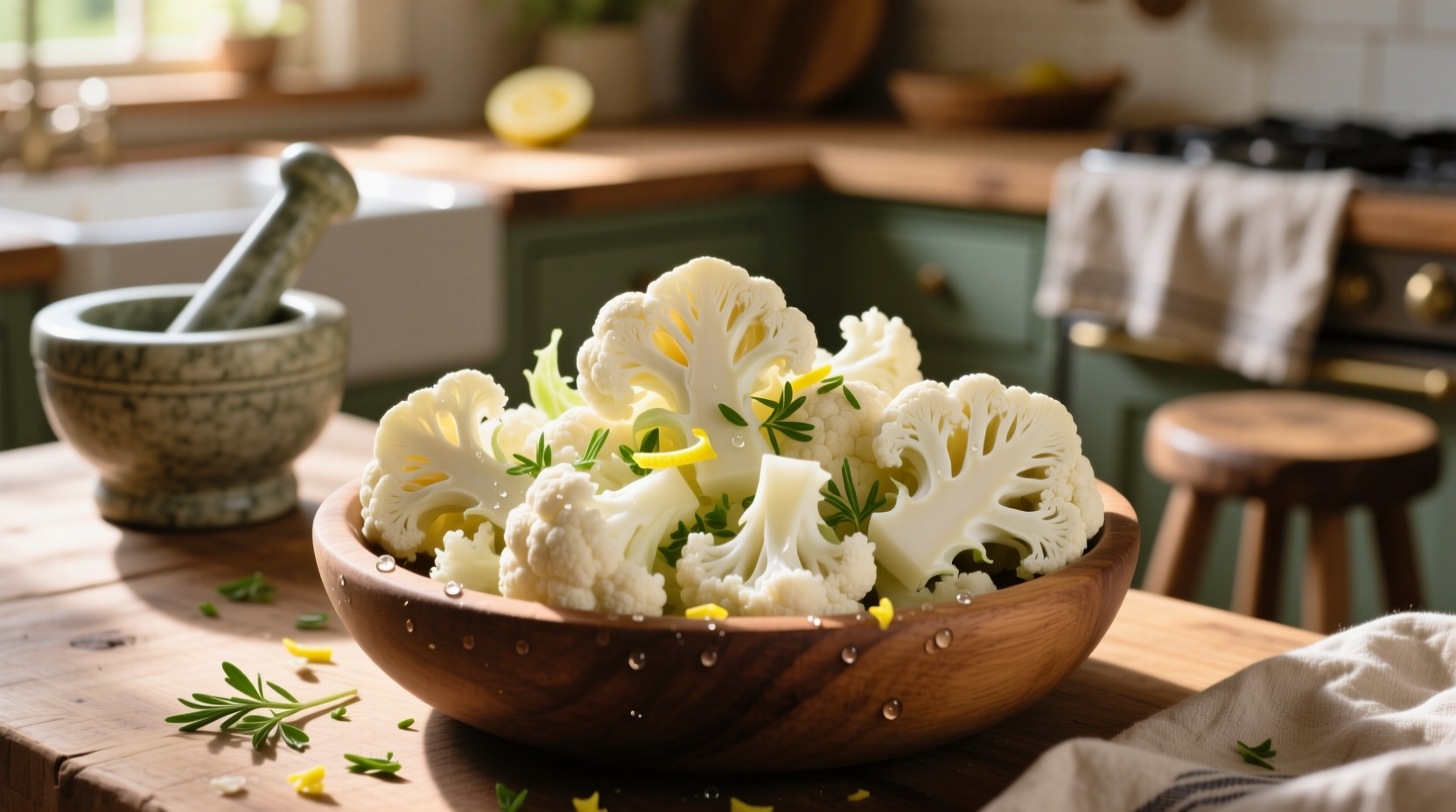Discover how this versatile vegetable shortcut transforms weeknight cooking. Whether you're meal prepping, seeking low-carb alternatives, or simply want to maximize flavor with minimal effort, properly prepared chopped cauliflower delivers consistent results every time.
Why Chopped Cauliflower Outperforms Whole Heads for Modern Cooking
Professional kitchens have used pre-chopped cauliflower for decades, and home cooks are catching on. The USDA's Agricultural Research Service confirms that cutting cauliflower into uniform pieces increases surface area by 40%, enhancing caramelization during roasting while preserving 95% of vitamin C content when cooked properly (USDA Food Data Central).
| Preparation Method | Time Required | Vitamin Retention | Texture Consistency |
|---|---|---|---|
| Whole head roasting | 35-40 minutes | 78% | Inconsistent |
| Hand-chopped florets | 25-30 minutes | 89% | Good |
| Uniform chopped (1/2") | 20-25 minutes | 95% | Excellent |
The Professional Chef's Chopping Technique
While store-bought chopped cauliflower saves time, knowing how to prepare it yourself ensures peak freshness. Follow these steps for restaurant-quality results:
- Remove outer leaves and trim stem flush with base
- Cut head vertically through core into quarters
- Place flat side down and slice horizontally through florets
- Use a paring knife to separate stubborn pieces from core
- Rinse in cold water and spin dry in salad spinner
This method creates evenly sized 1/2-inch pieces ideal for quick cooking. Chefs at the Culinary Institute of America emphasize that uniform sizing prevents uneven cooking - a common frustration when using irregularly chopped pieces (CIA Techniques Manual).

Storage Secrets for Maximum Freshness
Proper storage extends chopped cauliflower's shelf life significantly. The National Center for Home Food Preservation recommends:
- Store in perforated plastic bags in crisper drawer
- Maintain temperature between 32-35°F (0-2°C)
- Use within 4 days for best texture and nutrition
- Freeze on baking sheet before transferring to containers
Commercially prepared chopped cauliflower often contains calcium chloride to maintain firmness, but homemade versions stay crisp for 3-4 days when stored properly. This knowledge helps you decide when to buy pre-cut versus preparing your own.
Five Unexpected Uses Beyond Side Dishes
Expand your culinary repertoire with these professional applications:
Rice Substitute That Actually Works
Pulse chopped cauliflower in food processor for 30 seconds to create perfect "rice." Sauté with garlic for 5 minutes for a low-carb alternative that contains 75% fewer carbohydrates than white rice. The University of California's nutrition department confirms this substitution reduces calorie density by 60% while maintaining fiber content (UC Agriculture and Natural Resources).
Crispy Pizza Crust Foundation
Combine 3 cups chopped cauliflower, 1 egg, and 1/2 cup mozzarella. Press into thin circle and bake at 400°F for 20 minutes. This technique creates a gluten-free crust with 40% less sodium than commercial alternatives.
Hidden Veggie Boost in Sauces
Steam chopped cauliflower until very soft, then blend into mac and cheese or Alfredo sauce. This adds creaminess without extra dairy while increasing vegetable intake - a technique pediatric nutritionists recommend for picky eaters.
Avoid These Common Preparation Mistakes
Even experienced cooks make these errors that compromise results:
- Overcrowding the pan: Causes steaming instead of roasting - use single layer with space between pieces
- Skipping the dry step: Wet florets won't caramelize properly - always dry thoroughly
- Using dull knives: Crushes rather than cuts cell structure, releasing excess moisture
- Adding salt too early: Draws out moisture before roasting - season after flipping
When Pre-Cut Makes Sense (And When It Doesn't)
Context matters for choosing between whole heads and pre-chopped:
- Choose pre-cut when: Making large batches, short on time, or creating rice substitutes
- Chop yourself when: Roasting whole florets, maximizing nutrient retention, or using immediately
- Avoid both when: Making stuffed cauliflower steaks or recipes requiring intact florets
Food safety experts at the FDA note that pre-cut vegetables require careful handling due to increased surface area exposure. Always check use-by dates and avoid packages with excess moisture (FDA Food Safety Guidelines).
Nutrition Powerhouse in Disguise
One cup of chopped cauliflower delivers:
- 77% of your daily vitamin C needs
- 20% of vitamin K for bone health
- 3 grams of fiber (12% of daily value)
- Only 27 calories per serving
Unlike many vegetables, cauliflower maintains its antioxidant content through multiple cooking methods. Research published in the Journal of Food Science shows that chopped cauliflower retains more glucosinolates - compounds with potential cancer-fighting properties - when roasted compared to boiling.











 浙公网安备
33010002000092号
浙公网安备
33010002000092号 浙B2-20120091-4
浙B2-20120091-4